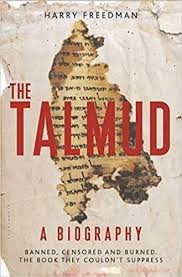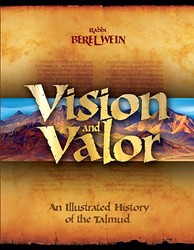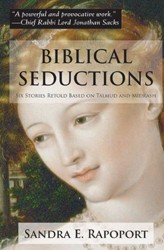If asked while standing on one foot who is the best-known rabbi, most Jews would probably answer Rabbi Akiva. Akiva abounds in the stories in the Talmud; he appears in the Haggadah; and his excruciating death is retold every year in the Yom Kippur liturgy. From such stories and sources, Barry Holtz, noted author and professor of education at the Jewish Theological Seminary, has fashioned a biography of the preeminent teacher and formative figure in rabbinic Judaism, the Judaism that has been practiced for two thousand years.
As Holtz points out, it is not possible to write a biography of Akiva in the sense that contemporary readers understand the term. With one very small exception, there are no records of Akiva other than internal Jewish sources; he left no writings, and the Romans took no note of him. What can be known, however, is the cultural and social setting in which Akiva lived and the intent of the stories about him — and the fact that Akiva has come down to us as a humble and beloved teacher, the model of how to live and die as a Jew.
Born around 50 CE, during the time of turmoil that led to the war in which the Second Temple was destroyed and hundreds of thousands of Jews were slaughtered, Akiva lived during a period in which the very survival of Judaism was in question. Holtz summarizes recent scholarship that shows the utter disarray of the Jews of Palestine after the destruction of the Temple. Into this time of overthrown beliefs, a small group of elite functionaries — not yet called rabbis — met in informal circles to study Torah and to debate topics of law, ethics, theology, and worship. This is the world in which Akiva lived.
The facts of Akiva’s life may be few, but the stories are many. Akiva emerges as an endearing, compassionate, and brilliant figure, an unlettered man of undistinguished birth who at the age of forty suddenly decides to throw himself into the study of Torah and soon has “learned everything.” Stories of the rabbis do not often dwell on their romantic lives, so it is particularly touching to learn of Akiva and his wife. (Although named Rachel only in an aggadic source, the name was later ascribed as a matter of convention.) The daughter of a well-born and wealthy man who disowns her, Akiva’s wife insists that Akiva study Torah in order to marry her; he is also devoted to her, as readers see in a charming scene of the two of them sharing a hayloft and Akiva’s wishing the straw in her hair were a crown of gold.
One of the pleasures of Rabbi Akiva is seeing the way Holtz stitches together Akiva’s life from the stories about him in the midrashim and the Babylonian and the Jerusalem Talmud. Compiled centuries after his death, the Talmuds gather stories from earlier sources. In the rabbis’ redacting of the stories and in the differences between various versions, Holtz demonstrates Akiva’s emergence as the central figure in many rabbinic discussions and the ways in which his influence and importance grew because of his creative and sensitive interpretations of the Torah. The epithet Sage of the Torah indicates Akiva’s prominence in shaping the discourse that is the foundation from which rabbinic Judaism evolved.
Holtz writes gracefully, inviting readers into the world of the Talmud and talmudic scholarship. Given the early obscurity of the rabbis and their inauspicious beginnings, it is compelling to read how the fragments of Temple Judaism were preserved and nurtured into what most of consider Judaism today. And much of this revolves around Akiva, whose intellect and innovative interpretive methods continue to inform and inspire both students and teachers.
Related Content:
- Joshua Lambert: Obscene Recommendations
- Jake Marmer: Poetry as a Noisy Mediterranean
- From Yavneh to the Bar Kokhba Revolt by Rabbi Binyamin Lau
Maron L. Waxman, retired editorial director, special projects, at the American Museum of Natural History, was also an editorial director at HarperCollins and Book-of-the-Month Club.





